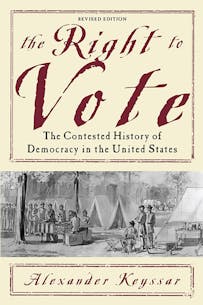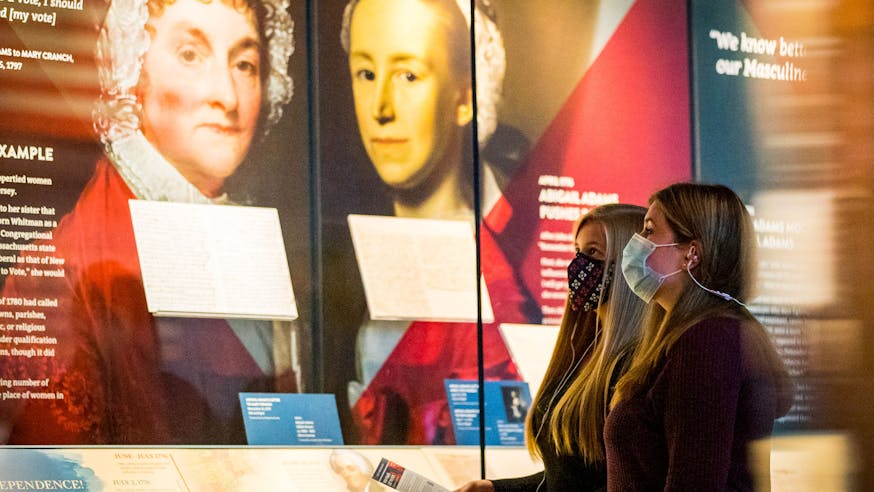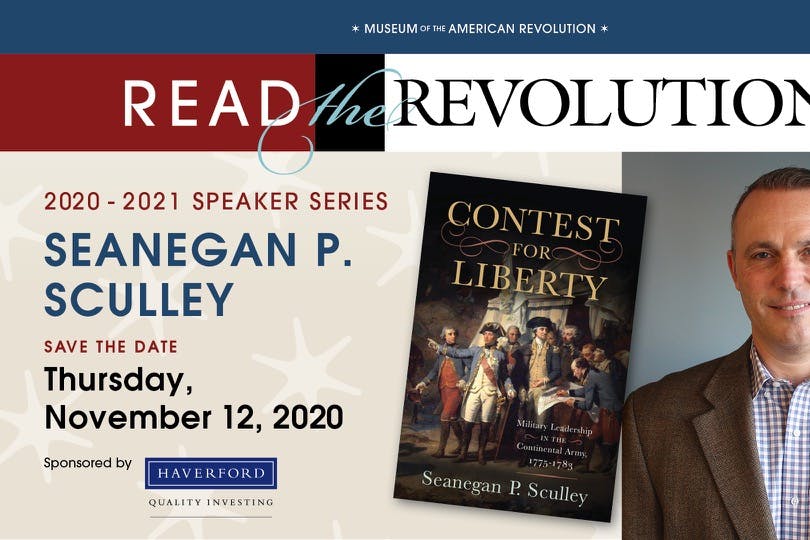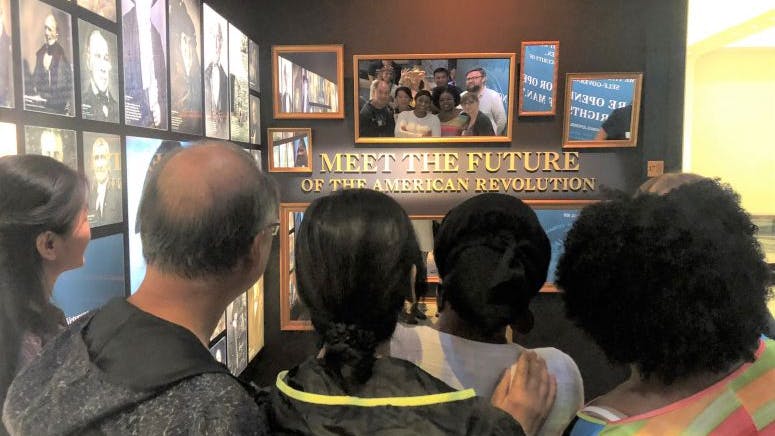Read the Revolution
The Right to Vote
October 28, 2020
Purchase the book through Basic Books.
States and nations have long faced challenges to ensure that citizens can vote freely and fairly. According to Alexander Keyssar’s award-winning book, The Right to Vote: The Contested History of Democracy in the United States (Basic Books 2000, Revised 2009), this has always been true for elections in America. With each presidential, state, or municipal election, the right to vote has expanded and contracted, events which Keyssar groups into chronological chapters spanning from the 1700s to 2009. Complete with a fascinating appendix of graphs that chart rights and requirements to vote by group, including suffrage requirements from 1776 to 1790 and Native American voting rights and laws in force from 1870 to 1920, Keyssar demonstrates that the process and practice of voting and partisanship has changed over time, under competing ideas and ideals of democracy.
In later chapters, Keyssar offers an overview about how the physical act of voting has changed. In addition to fundamental changes decided by constitutional conventions from 1790 to the 1850s, some state constitutions or statutes authorized written ballots and poll lists to protect against fraud, gradually replacing handwritten ballots with printed ballots. Questions about who gets the right to vote, how, and by whom that right is granted also are explored in the Museum’s 2020-21 special exhibition When Women Lost the Vote: A Revolutionary Story, 1776-1807. The exhibition brought to life the stories of women and free people of color who legally held the right to vote in Revolutionary–era New Jersey.
As we cast our ballots and reflect on the promise of citizenship in the lead up to and on Election Day, Nov. 3, 2020, we continue the national story of potential in the early years of America’s Revolutionary experiment. In this excerpt from Keyssar, read how the Revolutionary War influenced national, state, and municipal governments, along with how their individual residents and non-residents viewed expanded rights and access to the polls.
Excerpt
The ultimate end of all freedom is the enjoyment of a right of free suffrage.“A WATCHMAN,” Maryland Gazette, [August 15,] 1776
The “shot heard round the world” signaled the beginning of a new era in the history of the franchise. By challenging Britain’s right to rule the colonies, the American Revolution sparked a far-reaching public debate about the nature and sources of legitimate governmental authority. The issue of suffrage was always near the center of that debate: if the legitimacy of a government depended on the consent of the governed (one of the key rhetorical claims of the revolution), then limitations on suffrage were intrinsically problematic, since voting was the primary instrument through which a populace could express or withhold consent.
Did the colonial franchise restrictions, then, have to be abolished? The question loomed large, and in many of the former colonies, the revolutionary period—stretching from the mid-1770s to the ratification of the Constitution—witnessed heated public exchanges and sharp political conflict over the franchise; in some locales, men voted—or were prevented from voting—through the use or threat of force. Challenges to the traditional class restraints on suffrage were critical ingredients in the democratic, rather than anti-imperial, thrust of the revolution.
The conflict over the franchise that erupted during the revolution involved—as such conflicts always would—both interests and ideas. The planters, merchants, and prosperous farmers who wielded power and influence in late-eighteenth-century affairs had an unmistakable interest in keeping the franchise narrow: a restricted suffrage would make it easier for them to retain their economic and social advantages. Conversely, tenant farmers, journeymen, and laborers (not to mention African Americans and women) had something to gain from the diffusion of political rights. Landowners would maximize their political power if the franchise were tied to freehold ownership, while city dwellers, shopkeepers, and artisans had a direct interest in replacing freehold requirements with taxpaying or personal property qualifications.
[...]
The revolutionary period, in sum, witnessed a broad range of reactions to economic restrictions on the franchise. Although often overshadowed by other issues (such as taxation or the structure of future legislatures), the breadth of the franchise mattered greatly to citizens of the thirteen original ex-colonies and the new state of Vermont. In every state, there was pressure for suffrage reform, as well as conservative opposition to a less class-biased, more economically inclusive franchise. The outcomes of these conflicts followed no clear regional pattern; they seem instead to have been shaped largely by the strength of local elites and by the particular political processes that unfolded in each state. The overall result was a mixed bag of substantial changes, cosmetic alterations, and preservation of the status quo.
On noneconomic fronts, however, proponents of suffrage reform fared better. The disfranchisement of Roman Catholics and Jews was brought to an end—although in South Carolina it remained necessary to “acknowledge the being of a God.” Free African Americans were tacitly enfranchised in North Carolina, Massachusetts, New York, Pennsylvania, Maryland, and Vermont. (They remained voteless in Georgia, South Carolina, and Virginia.) In New Jersey, the revolutionary-era constitution permitted women to vote (a development to be discussed at length in subsequent chapters).
Alongside these substantive matters, several important legal and jurisdictional issues also were shaped, or structured, during the revolutionary period. The first was that suffrage was defined as a constitutional issue: all of the early state constitutions (except that of Delaware) treated the right to vote as a matter of fundamental—and thus constitutional—law, rather than statute law. Implicit in this treatment was the notion that suffrage requirements ought to be durable and difficult to change; legislatures and governors alone were not entrusted with the power to tamper with the right to vote. In theory at least, the franchise could be broadened or narrowed only through constitutional revision or amendment.
In addition, the revolution witnessed the perpetuation and, in some instances, the reinforcement of the distinction between state and municipal voting rights. In cities that possessed charters from the colonial period, the right to vote in municipal elections continued to be determined by city officials and charter rules; in almost all of the twenty-five cities incorporated during the revolutionary era, municipal voting rights were specified in new charters. Despite the constitutional character of state voting requirements, legislatures—which could grant new charters—were granted the power to define the electorate for nonconstitutional (including local) offices.
The most common manner in which municipal voting rights differed from the state suffrage was in the configuration of property restrictions: increasingly, urban residents who did not own real property could vote if they met either a personal property or a taxpaying requirement. The principles of state law were, in effect, adapted to urban conditions. In some locales, however, the differences were more substantial. Nine of the cities chartered during the revolution granted the franchise to nearly all adult males, and Massachusetts, in the 1780s, passed a series of laws that gave the right to vote in town meetings to all men who could meet a minimal taxpaying requirement.
On the whole, municipal voting rights tended to broaden more rapidly than did the right to vote in state elections, probably because of pressure from propertyless urban citizens. There were important exceptions to this trend, however, notably among cities with prerevolutionary charters. In Norfolk, Virginia, for example, a closed corporation of merchants continued to govern the city without the electoral participation of most inhabitants; only in the late 1780s did the state government, responding to petitions from the populace, grant municipal suffrage to those who could already vote for state legislators. In so doing, the commonwealth was tacitly setting a precedent, ruling that municipal charters were not inviolable. In Philadelphia and New York, similarly, local elites sought to preserve, or impose, a restrictive municipal suffrage in order to retain political control of their cities: in both urban centers sharp conflict over the suffrage—and over the state’s right to intervene in the affairs of municipal corporations—persisted into the postrevolutionary era.
Alexander Keyssar, The Right to Vote: The Contested History of Democracy in the United States (Basic Books 2000, Revised 2009) 7-8 and 16-17.
Read the Revolution is sponsored by The Haverford Trust Company.
Read the Revolution is published biweekly by the Museum of the American Revolution to inspire learning about the history of the American Revolution and its ongoing relevance.
Sign Up
Get biweekly Read the Revolution featured excerpts right to your inbox.
Tags
Learn More

When Women Lost the Vote: A Revolutionary Story
October 2, 2020 - April 25, 2021
Read the Revolution Speaker Series with LTC Seanegan P. Sculley
November 12, 2020 from 6-7:15 p.m.

